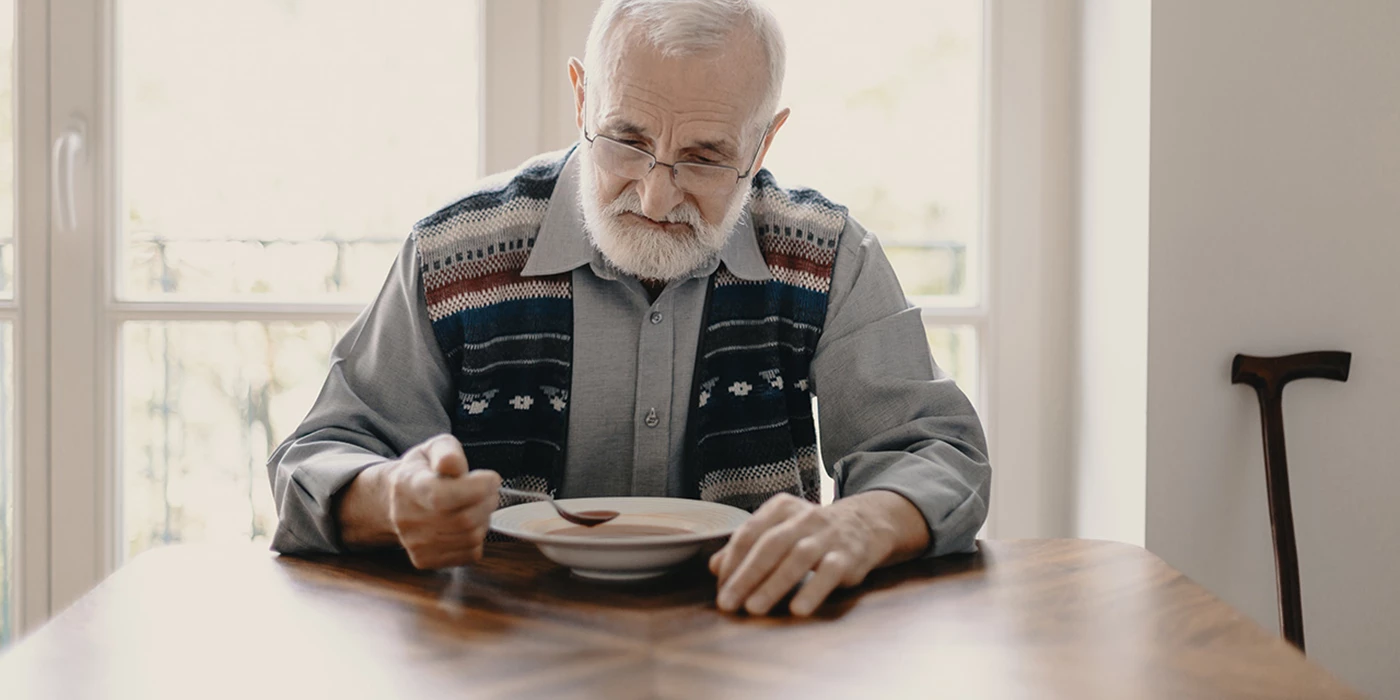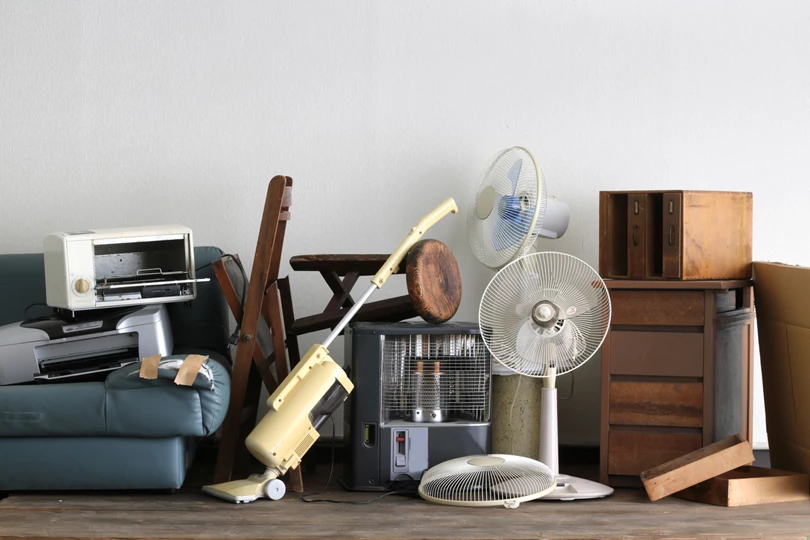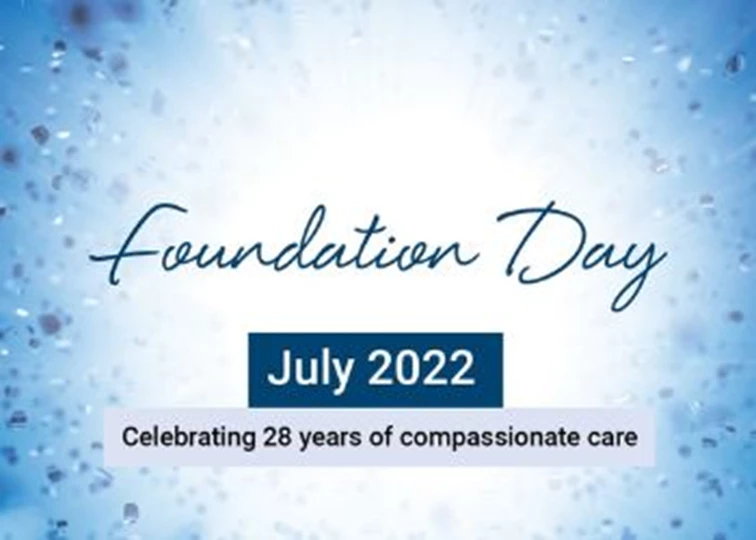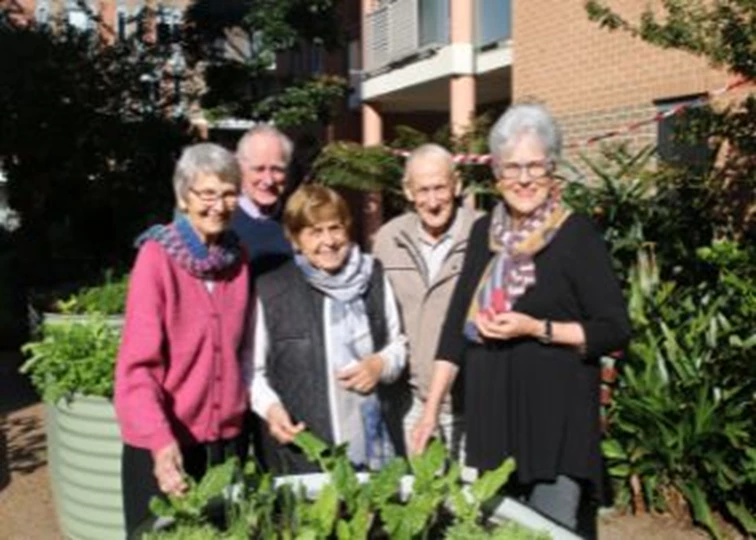...My mother is a resident and she loves her room, meals and all the staff who are both caring and respectful towards residents and visitors. I wholeheartedly recommend this facility.
What is Hoarding Disorder?
Many individuals will state that they have some clutter but not necessarily experiencing hoarding.
While the situation may have started off as clutter, even excessive clutter, when this behaviour and items start to take over a person’s ability to use their home for its intended purpose, this is identified as hoarding.
Hoarding is a psychological health condition that manifests in the compulsive acquisition of possessions. Often the possessions have little value and hoarding them can lead to unsanitary and unsafe living conditions.
For many years Catholic Healthcare has been the trusted specialist in supporting those living with the effects of hoarding and squalor in NSW. Our award-winning online Buried in Treasures program is open statewide.
How Catholic Healthcare Can Help
Hoarding and Squalor Program (Assistance with Care and Housing)
A One-on-One service where our team deep clean and declutter your home and remove rubbish.
Buried in Treasures (Online Hoarding Support Group)
An online program open to anyone over 65 living in New South Wales, where you receive strategies and techniques to assist you in getting rid of things you no longer need and prevent you from collecting more items. You will learn how you got to where you are now and the skills to let go. And with the help of a supporting handbook you will map out what a successful path to becoming free from clutter, looks like. Register today for one of our upcoming Buried in Treasures Programs.
Declutter group (currently online)
Offering people with hoarding tendencies some strategies to let go, as well as an opportunity to keep sharing their experiences and insights and to learn from each other in a non-judgmental environment.
One-on-one psychosocial support program
10 sessions offering support, mentoring and education to regain control of oneself and your environment.
Signs of Hoarding Disorder
-
- You or your loved ones have concerns about your living conditions but feel unable to improve them
- You recognise the need to improve your situation but are overwhelmed with where to start
- Your accumulation of items is making access to your home or parts of your home difficult
- Your living conditions are affecting your health and putting your safety at risk
- You are at risk of becoming homeless
- You or your loved ones have concerns about your living conditions but feel unable to improve them
Is There a Cost to the Client
All of our Hoarding and Squalor services are available for free with the relevant CHSP funding or at a cost through your Home Care Package Funding or purchased privately. We sort the financial side out and assist you or your client to assess My Aged Care.
Client Eligibility Criteria
The Online Buried in Treasures program and face-to-face services are open to anyone over 65 living in NSW.
To be eligible you must be aged 65 years or older, or if you are Aboriginal or Torres Strait Islander you need to be over 50 years of age. If you are low-income, homeless, or at risk of being homeless the eligibility is 50 and over or 45 and over if you are Aboriginal or Torres Strait Islander.
Take the first step and call us on 1300 931 638 to have a confidential discussion, or make an enquiry by completing this form.
Hoarding and squalor frequently asked questions
-
What is hoarding?
Hoarding means acquiring or having difficulty discarding a large volume of possessions which others would consider useless or of limited value. Since 2013, hoarding has been recognised as a psychiatric condition. It differs from chronic messiness and collecting.
People who hoard may see possessions as important or closer to treasure while others may see them as valueless and closer to rubbish. Hoarding can be viewed as one way to barricade or protect oneself from the world outside.
People who hoard may have great difficulty discarding possessions and can experience great distress in thinking about discarding or in having accumulated possessions taken away from them.
Hoarding doesn't just affect individuals. Families, friends, neighbours and communities are also impacted.
-
What is squalor?
Squalor is used to describe somewhere that is cluttered, filthy and unclean through neglect. It describes a living environment. Whereas, hoarding describes a behaviour, related to a mental health condition.
-
Who is affected? Are there others like me?
Yes. While it is difficult to accurately give good estimates of the prevalence of hoarding and squalor in the community due to the hidden nature of many situations, international research in Europe and North America suggests that up to 2% to 6% of the population (1.2 million Australians) may exhibit compulsive hoarding behaviours.
Hoarding affects people of different ages. Characteristics can begin in childhood with mild symptoms in mid-teens, and moderate symptoms in the 20s. In adulthood, hoarding can reveal itself after a stressful or traumatic event.
Because of the health and safety risks associated with hoarding and living in squalor, other people, including family members, people living with sufferers, neighbours and communities, are affected by hoarding and squalor situations.
-
What are the causes? Why do people hoard?
It is not clear what causes hoarding disorder and there is no single answer to this question.
Health, medical and community service providers cite different reasons why people hoard.
Some key causes include:
-
- family influences and experiences;
- response to significant life events (such as war, trauma);
- difficulty with executive functioning (processing information, categorisation, decision making, memory);
- emotionally driven reinforcement patterns (i.e. where learning is driven by emotions or acquiring possessions can make people who hoard feel good);
- inability to form personal relationships;
- cognitive impairment caused by dementia, alcohol-related brain damage (evidence suggests that between half to two-thirds of people living in extreme domestic squalor may be affected by dementia, alcohol-related brain damage, mental health issues); and
- mental health issues such as schizophrenia, depression.
For people affected by hoarding, reasons or causes may include:
-
- protection and prevention from other people getting too close;
- creates a feeling of security;
- strong emotional attachment to items;
- a belief that the items are worth valuing and/or might be useful someday;
- a strong desire not be wasteful;
- an intention to sort through accumulated belongings; and/or
- the situation reflects negative feelings about self (e.g. feeling like rubbish, not valued, broken).
-
-
Is Hoarding and Squalor genetic?
Hoarding patterns in families suggest that, in some cases, people may have a genetic predisposition to hoarding.
The condition can appear as a result of a genetic history of hoarding, ageing related illness, trauma or childhood neglect.
-
What are the signs and symptoms of hoarding disorder?
There are some common characteristics that you can recognise in a person who is hoarding or living in squalor, but everyone is an individual with a unique set of experiences, beliefs and values.
Typically, a person who hoards or is living in squalor:
-
- cannot stop bringing items into the home;
- believes that the items are in some way part of themselves;
- is unable to effectively categorise items;
- is affected by indecision;
- is unable to discard items without feeling distressed;
- has lost control of their living environment and parts of the house or entire rooms have become cluttered and unusable;
- feels shame about their situation and may hide their cluttered and squalid living environment from others;
- may or may not seek help depending on their level of insight and feelings of shame.
Some people with hoarding tendencies or living in squalor are able to continue to work, and may appear to others to have a 'normal' life.
-
-
What is animal hoarding?
An animal hoarder is a person who accumulates a large number of animals, usually cats or dogs. Sub-groups of animal hoarders include:
-
- incipient hoarders in early stages of hoarding;
- overwhelmed caregivers who are strongly attached to animals and usually aware of the situation but cannot give adequate care;
- rescuers who may have initially tried to place animals but ultimately only trust themselves to provide adequate levels of care.
- Breeder hoarders who initially selectively breed for show or sale but who continue to breed when conditions deteriorate; and
- exploiters who may claim to be breeders but lack empathy for people or animals (e.g. puppy farms).
-







